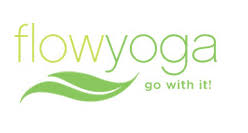I suppose my giving of “health” began as a frugal child. I would make “passes” for my parents — massages, baths, manicures, cooking dinner — what initially may sound like a lame cop-out for being stingy with gifts always came from a good place. I’d always rather make something. These are often the gifts that we still talk and laugh about (and what they claim to still be their favorite gifts). The moment of giving lasted beyond the opening of a gift; it was an experience we shared with each other.
It’s easy to get caught in the holiday rush. Instead, we can harness this energy to not only improve the lives of others but also ourselves. There is evidence that gift-giving can secrete “feel good” chemicals in our brains — serotonin (a mood-mediating chemical), dopamine (a feel-good chemical), and oxytocin (a compassion and bonding chemical).
If you’re looking for a list of tangible item recommendations, read no further. Of course, I have a list of my favorite, timeless items that have elevated my health and that of others. Today, you’re not going to find a gift guide from me promoting certain products. Rather, I’m going to give you the tools to create your own list in a way that will benefit you and those you love. Below are five ways to give the greatest gift of all — health.
1. Support
As Kanye West says, “my presence is a present.” Gather the friends, gather the fam. These times together are mutually beneficial for your health and your guests. According to a study published in the International Journal of Psychophysiology, people who gave social support to others had lower blood pressure than people who didn’t. So throw that holiday party, invite the family for dinner at your house, and use this time to be present with those around you.
2. Volunteering
Do this on your own or as an activity with the family. Studies found that giving has numerous health benefits: lowering blood pressure, increasing self-esteem, decreasing depression, lowering stress levels, and contributing to a longer life and greater happiness; “Researchers also found that people who gave their time to help others through community and organizational involvement had greater self-esteem, less depression and lower stress levels than those who didn’t.” Biologically, this makes us feel good, “activating regions in the brain associated with pleasure, connection with other people and trust” and stimulates the reward center of the brain.
3. Thought
Sales, gadgets, brands…we can become inundated with material items and fads. There are plenty of ways to give with creativity and thoughtfulness that has meaning beyond the latest trend. If you really still feel you want to buy an item, think about the person’s goals, small comments, and how you could help foster a healthier work, sleep, home, and fitness environment that they experience every day.
4. Experiences
Last year, my mom bought me passes to yoga for us to enjoy together. Improved health can come in many forms — information, workout classes, equipment, books, gadgets, services, etc. This has been a gift that not only allowed us to improve our health, but an activity that we could continue sharing with each other all year. Please visit Flow Yoga in Leesburg or Ashburn to purchase passes.
5. Yourself
Lastly, who says gifts have to come from others? What about giving to you? It’s a beautiful thing to give to others, but never hesitate to invest in yourself, and honor all YOU deserve. Most importantly, take a moment to appreciate the gift of health you already possess – perhaps you made incredible progress this year, overcame an injury or challenge, achieved your fitness goal or you simply have an able body. Appreciating your own health allows you to better give to others.
— Amanda Presgraves
Amanda is a recent business graduate from Wake Forest University with her B.S. in Exercise Science from James Madison University. As Division I collegiate swimmer, life-long athlete, and entrepreneur – Amanda is an advocate of health and personal growth, on a constant pursuit to optimize life and inspire others through her commitment to healthy living. If you can’t find Amanda bouncing between projects, the gym, kitchen, her mat, or volunteering, you can find her online as she continues to lead and motivate others towards a happier and improved life through article contributions, newsletters and community motivation. (@amandapgraves, linkedin).



